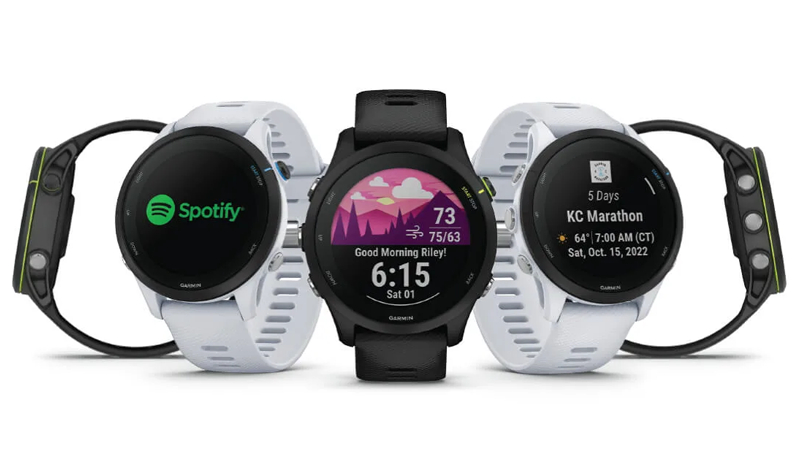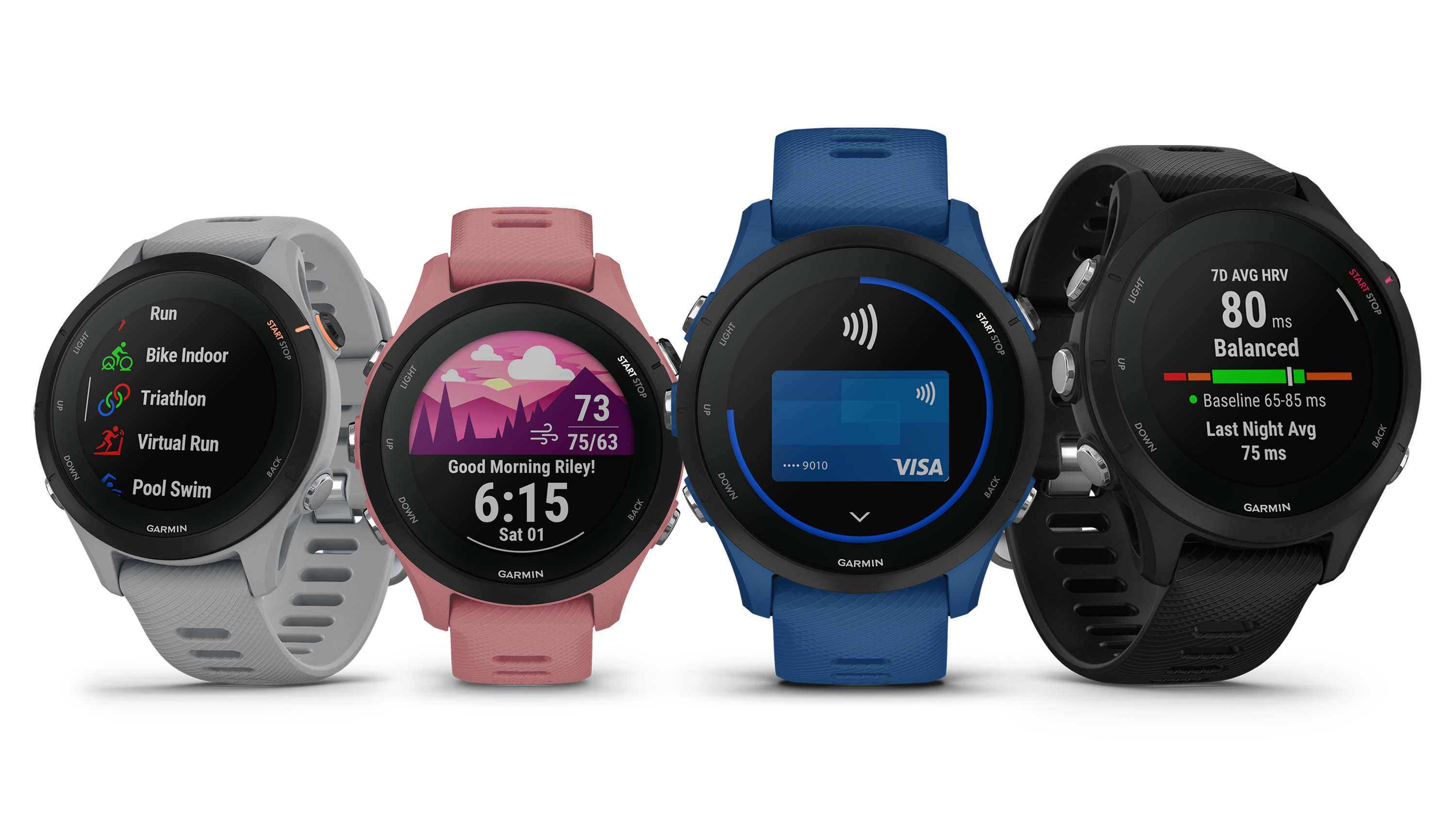Garmin releases Forerunner 255 and Solar-powered 955 smartwatches
Upgrade improves battery life of Garmin Forerunner 955 and Forerunner 255 along with range of new features

Garmin has released solar-powered versions of two Forerunner smartwatches, giving the popular smartwatch an extended battery life that will increase its appeal to long-distance riders, runners and more.
The new flagship model in the range, the Garmin Forerunner 955, now boasts a battery life of up to 49 hours in GPS mode, improving on the 36 hours for its predecessor the 945, while a touchscreen has also been added to improve the interface with the vast array of health and fitness-tracking features and map functions on offer.
In its battery-saving mode, Garmin says the Forerunner 955 can last up to 20 days and the move will be a welcome upgrade for many cyclists, with battery life one of the main concerns when choosing a bike computer or a smartwatch. The addition of Garmin's Power Glass solar-charging lens brings the Forerunner closer in line with the American company's current leader in the battery-life stakes, the Enduro, which boast 80+ hours, and the solar versions of the more premium Fenix watch.
The latest version of the Forerunner retains its rugged-yet-stylish look and also comes with a new multi-band GPS function that filters out inaccurate signals in order to improve precision.
There are several new functions to help with preparation and recovery, such as heart rate variability (HRV) status; and in-ride functions such as a race widget – which includes race-day weather and a countdown clock – and real-time metrics.
Turbo-trainer compatibility
Like all the best smartwatches for cycling, the Forerunner 955 can be linked to a power meter, with Garmin offering compatible versions in SPD-SL, SPD and Look Keo pedals with the Rally power meter pedals. It can also be used with Garmin's Tacx turbo trainers and, of course, be synced with Strava.
While the added features on the Forerunner 995 will make it more appealing to cyclists, it is still in essence a running watch, Garmin's announcement coming on Global Running Day, but it also has a function to track swimming strokes, so is an equally suitable option for triathletes.
Get The Leadout Newsletter
The latest race content, interviews, features, reviews and expert buying guides, direct to your inbox!
Its versatility is its strength, however, and where it does offer more than, say, the Enduro, is that it comes with room to store up to 2,000 music tracks. It also retains its predecessor's Garmin Pay functionality for contactless payments.
Forerunner 255

Alongside the 955, Garmin has announced the release of the Forerunner 255, which claims up to 30 hours of battery life in GPS mode and 14 days in smartwatch mode.
There are in fact four options available in the Forerunner 255, with a music version that can store up to 500 songs, with each coming in two sizes.
The same HRV status and race widget functions are available, and both the 255 and 955 have Garmin's Pulse Ox, which monitors blood oxygen saturation levels, and women's health features such as menstrual cycle and pregnancy tracking.
Pricing and availability
The Forerunner 955 is available right now for £479.99 ($499.99), while the Forerunner 955 Solar is £549.99 ($599.99).
Both sizes of the Forerunner 255 are priced the same. The standard version is priced at £299.99 ($349.99) while the Music version is a little more pricy at £349.99 ($399.99).
Looking to track your cycling progress more accurately? Our Garmin coupons can help you save on tech to guide your progress.
Ben has been a sports journalist for 16 years, covering everything from park football to the Olympic Games. As well as cycling, his passions include podcasts, tennis and speaking enough Italian to get by on his snowboarding trips to the Dolomites. A DIY rider who is almost as happy in the toolbox as he is in the saddle, he is still trying to emulate the feelings he experienced as a nine-year-old on his first Peugeot racer – he couldn’t fathom the down-tube friction shifters then and he’s still wrestling with groupsets now. When he isn’t making a beeline for the nearest Chiltern hill, he is probably tinkering or teaching his kids how to clean a bike properly. He rides a heavily modified 1980 Peugeot PVN10 Super Competition (steel is real) when the road is smooth and dry, and a BMC Alpenchallenge when it’s not.